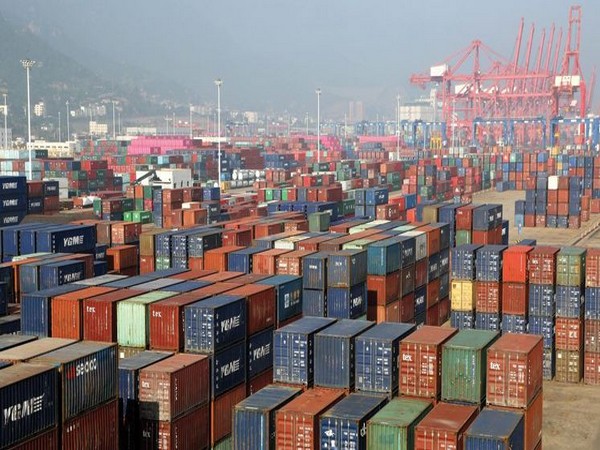
New Delhi: According to India’s commerce ministry, Bangladesh's exports to India is down by 11% during Jan-June 2024 as against 8% growth in the same period last year. Anticipatedly, Bangladesh's exports to India as well, as the rest of the world has taken a bigger hit in July-September quarter, due the ongoing political turmoil.
Failure in meeting export commitments generally has a longer-term impact. There are reports of western buyers of readymade garments shifting orders to China and Vietnam. Indian textile industry is also a gainer.
The impact is multi-dimensional on Bangladesh’s weak economy. First, according to ITC Trade Map mirror data, India has been the fastest growing market for Bangladesh in last 10 years. In 2008, Dhaka exported goods worth barely $330 million to India.
Former Prime Minister Sheikh Hasina came to power in January 2009. Between 2010 and 2012, New Delhi reduced the import duty on Bangladesh products to zero. The list excluded some 25-30 sensitive items. Over the next decade, there has been marked improvement in transport infrastructure in both India and Bangladesh. India invested heavily in its border trade infrastructure.
The balance tilted further in Bangladesh’s favour in 2017 when India reformed its indirect tax structure. The new goods and services tax (GST) subsumed all additional duties and cess on imports. The result was showing on Bangladesh’s booming exports to India. In 2013, India ($530 million) was 15th largest export destination, behind China (12th) for Dhaka. According to ITC Trade Map mirror data, at $1.89 billion India was the 7th largest market for Bangladesh in 2023. China’s position was relegated by one step to 13th. Everything else remained same in the list.
There is more to this story. Bangladesh earns 85% of its export revenue from readymade garments. They are largely into stitching the final product for overseas brands and, are almost fully-dependent on imports for raw materials. Idia is an integrated player.
It exports raw cotton, fabric, yarn, accessories etc. Due to higher labour cost than Bangladesh, India is more into high value garments. On top of all, India is a large market for foreign brands and has strong homegrown brands which not only dominate the domestic apparel market but are also exported.
The era of cooperation during Hasina-rule, therefore, saw Bangladesh emerging as a supplier to major Indian and foreign brands operating in India. In short Dhaka was fast emerging as an integral part of the Indian value chain. Sri Lanka already enjoys a similar advantage.
The production process of many top fashion brands like Victoria’s Secret are spready between India and Sri Lanka. Majority of these produce are consumed in India. Close proximity, quality logistics, access to raw materials and vast market place makes this value chain lucrative.
Over the last decade, Bangladesh became a pat of it. Goods were shuttling between India and Bangladesh to complete the production of Marks & Spencer and, Wills Lifestyle outfits. Marks & Spencer is a multinational brand with sprawling Indian operations. Wills Lifestyle was owned by India’s top corporate ITC Ltd.
This is just one part of the story. The integration helped even the Bangladeshi producers supplying to buyers in USA and UK. If Bangladesh’s total exports zoomed by nearly 60% from $43 billion to $68 billion between 2020 and 2022, part of the credit goes to value chain integration with India. Those were times of global supply-chain disruption. The sea freight for a 40 ft container between Indian and Chinese port had shot up by 10-times. More importantly containers were barely available. That was on top of high volatility in both forex and commodity prices. Dollar became costlier as the US adopted tight money policy to combat high inflation.
Things became particularly difficult after the Russia-Ukraine conflict started in February 2022. Bangladesh was spared part of the problem as raw materials for garment manufacturing rolled in by trucks and trains bypassing the entire uncertainty of maritime trade on the import side. Quick transfer of goods helped the country to save on forex. It takes minimum 15 days, if not more, for transfer of goods from China to Bangladesh. From India, the transaction can be completed in a maximum seven days.
The importance of the regional trade was better understood over the last two years. Bangladesh was witnessing a steady decline in its foreign exchange reserve since mid-2022. Global trade had hit a slow track from end-2022 as the US, Europe and Chinese economy entered a critical phase. US is lately showing some signs of recovery but the situation has deteriorated in Europe and China. Japan is witnessing deflation. In China, inflation is hovering around zero for last one-and-a-half years, indicating tepid demand. Only India economy is growing at a robust pace.
The results are interesting. According to India’s commerce ministry, Delhi’s exports to Bangladeshwere down by 19.5%, in 2023 calendar. That was time when Dhaka was rationing imports to survive a crippling foreign currency crisis. But Bangladesh's exports to India were down by only 5%. The point is simple, Bangladesh would have been in deeper crisis had it not latched onto the Indian growth story.